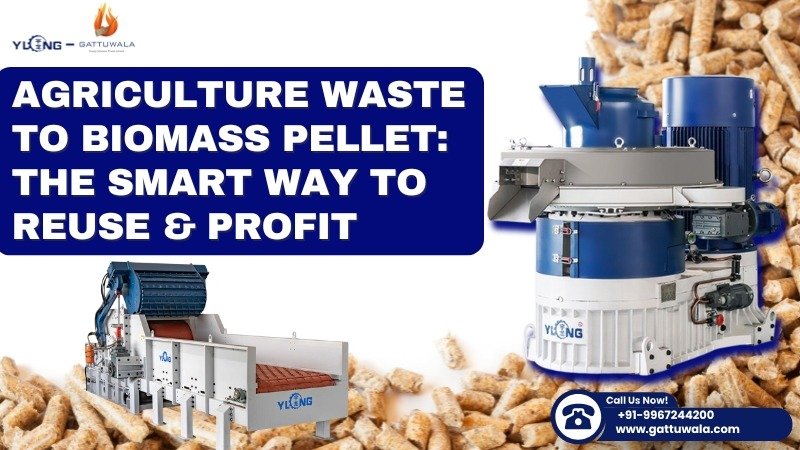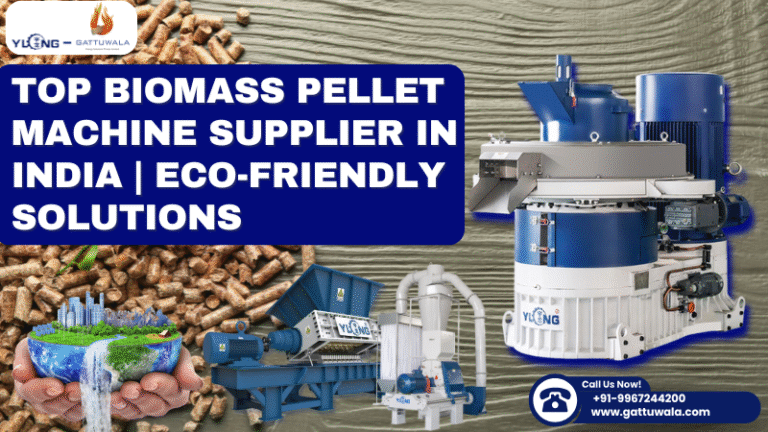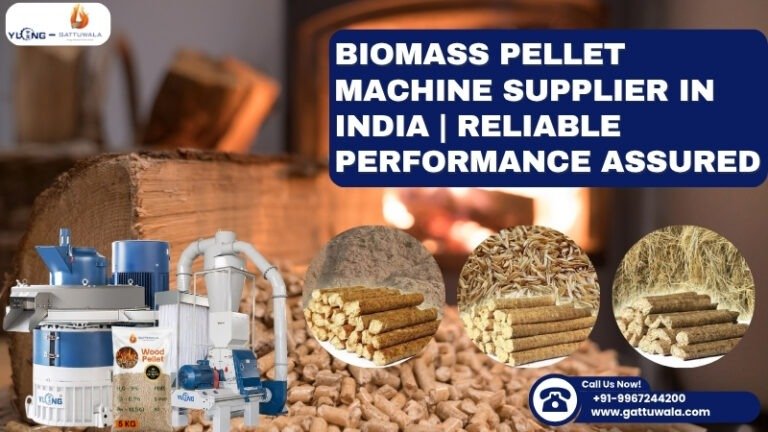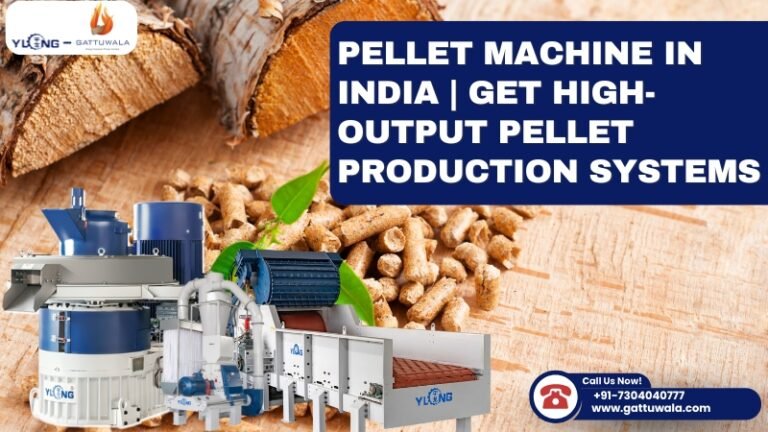- June 18, 2025

In today’s environmentally conscious world, managing agricultural waste has become both a challenge and an opportunity. With the rising need for sustainable energy sources, turning agriculture waste to biomass pellet is gaining momentum in India and across the globe. It’s not only a smart way to reuse what was once discarded, but also a profitable venture that supports clean energy, boosts rural income, and combats environmental pollution.
This article explores how agricultural residues can be transformed into biomass pellets, the technology involved, the benefits, and why this approach is becoming one of the smartest and most profitable trends in renewable energy.
🌾 What is Agricultural Waste?
Agricultural waste includes:
• Crop residues like wheat straw, rice husk, sugarcane bagasse, cotton stalk, maize cob
• Forest residues such as branches, bark, and leaves
• Processing residues like groundnut shells, coconut husk, and sawdust
India generates over 500 million tonnes of agricultural waste every year. Traditionally, much of this is either burned or left to rot—leading to massive environmental concerns such as air pollution (stubble burning) and methane emissions.
🔥 What are Biomass Pellets?
Biomass pellets are small, cylindrical, compressed biofuels made from organic materials. These pellets are used for heating, cooking, industrial fuel, and power generation. Unlike raw agricultural waste, pellets are:
• High in calorific value
• Uniform in size and density
• Easy to store, transport, and handle
• Environmentally friendly
🔄 Converting Agricultural Waste into Biomass Pellets
Step-by-Step Process:
- Collection & Sorting
Raw materials are collected and separated to remove impurities (plastic, stones, moisture-heavy materials). - Grinding / Crushing
A hammer mill or crusher reduces large materials into fine powder to improve pelletizing efficiency. - Drying
Materials are dried to optimal moisture content (10–15%) using rotary or flash dryers. - Pelletizing
The dried powder is fed into a biomass pellet machine where it’s compressed under high pressure into uniform pellets. - Cooling & Packing
The hot pellets are cooled using a cooler and then packed into bags for distribution.
This process is commonly supported by leading biomass pellet machine suppliers in India, who offer full pellet production line setups.
🌱 Benefits of Biomass Pellets from Agricultural Waste
♻️ Waste Management
Helps dispose of crop waste responsibly, eliminating open burning and reducing landfill use.
🔋 Clean Energy
Pellets are a renewable source of energy with low emissions compared to coal or diesel.
💸 Profitability
Farmers and entrepreneurs can sell biomass pellets to industries, power plants, or even export them.
🌍 Carbon Neutral
Pellet combustion releases only the carbon that was absorbed during crop growth — maintaining carbon balance.
🔧 Low Investment, High ROI
Modern pellet machines in India are affordable and scalable, making them ideal for startups and rural entrepreneurs.
📊 Use of Biomass Pellets in India
With India’s commitment to reduce its carbon footprint, industries are shifting toward biofuels like pellets. Key application areas include:
• Industrial boilers in textile, food, paper, and cement sectors
• Power plants co-firing with coal
• Household cooking stoves
• Commercial tandoors, dhabas, and bakeries
• Export markets (Europe, Japan, South Korea)
This growing demand makes biomass pellets a highly marketable and profitable product.
🏭 Role of Pellet Machine Manufacturers in India
To turn agricultural waste into quality biomass pellets, investing in reliable machinery is essential. Leading pellet machine manufacturers in India like:
• Gattuwala Energy
• Yulong India
• Lehra Fuel Tech
• Lark Engineering
…offer advanced solutions such as:
• Wood pellet lines
• Biomass torrefaction systems
• Mobile pellet plants
• Customized pellet production units
They also provide services like machine installation, training, AMC, and government subsidy assistance.
To promote clean fuel alternatives, the Indian government offers support via:
• National Bio-Energy Mission
• Subsidy schemes by MNRE (Ministry of New and Renewable Energy)
• State-level incentives for biomass power plants and pellet production units
📈 How to Start a Biomass Pellet Business from Agri Waste
1. Raw Material Survey – Identify local sources of crop residues.
2. Feasibility Study – Analyze market demand and operational cost.
3. Machinery Selection – Choose the right capacity and type from top suppliers.
4. Location Setup – Ensure proximity to raw material and market.
5. Government Compliance – Obtain pollution control and industrial permits.
6. Branding and Sales – Connect with industries and B2B portals like IndiaMART
🌍 Global Market Opportunity
India is not only producing pellets for domestic consumption but also emerging as an exporter. Countries like:
• Japan
• South Korea
• Europe
• UAE
…are looking for affordable and quality biomass pellets due to high energy prices and carbon neutrality targets.
With low-cost production and abundant raw materials, India is poised to lead in the global biomass pellet export market.
Turning agriculture waste to biomass pellet is one of the smartest ways to convert a problem into a profitable solution. It reduces pollution, creates green jobs, and supports India’s transition toward renewable energy.
With the help of reliable pellet machine suppliers, government schemes, and increasing demand from both domestic and international markets, now is the best time to invest in this eco-friendly business model.
If you’re a farmer, entrepreneur, or investor looking to make a green impact while earning profit, biomass pellet production from agri-waste is your ideal path.





